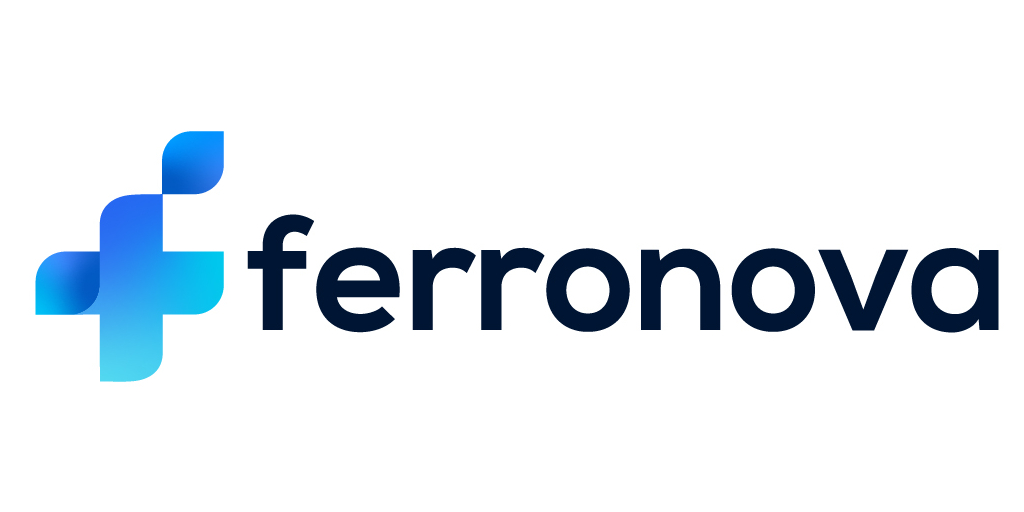ADELAIDE, Australia–(BUSINESS WIRE)–Australian biotech company Ferronova has announced the initiation of a clinical trial of the company’s FerroTrace® nanoparticle technology in patients with gastric and oesophageal cancers. It follows the completion of a first-in-human trial in 2020-2022 in oral cancer patients.
The MAGMAP trial will enrol 60 patients and commenced today with the first patient at the Royal Adelaide Hospital, to be followed by Flinders Medical Centre and Queen Elizabeth Hospital in South Australia, and then expanding to the Peter MacCallum Cancer Centre and Austin Hospital/Olivia Newton John Cancer Centre in Victoria. Trial imaging is supported by the South Australian Health and Medical Research Institute (SAHMRI) and the National Imaging Facility.
The MAGMAP trial (Clinicaltrials.gov ID: NCT05899985) is a multi-centre, partially blinded, side-by-side comparator study to assess the safety and tolerability, feasibility, and potential added diagnostic and clinical value of FerroTrace® for mapping high-risk lymph nodes in subjects.
Ferronova Chief Executive Officer Mr Stewart Bartlett said it is potentially an important study offering the promise of an innovative approach for identifying and assessing lymph nodes at high risk of containing cancer.
“Gastric, gastric-oesophageal junction, and oesophageal cancers have very poor outcomes, even where the tumour is localised to a primary location and surrounding lymph nodes where surgery is intended to be curative, and this trial is an important step to test whether our novel technology can improve outcomes in this group of patients.”
Studies show following surgery, the 5-year relative survival rates for localised gastric and oesophageal cancers are approximately 74.7% and 48.5% respectively. Where the cancer has also spread to lymph nodes, the 5-year relative survival is only 34.6% and 27.7% [1][2].
Ferronova’s FerroTrace® product is a super-paramagnetic iron oxide nanoparticle targeting CD206 receptors found in lymph nodes. It offers a unique targeting mechanism designed to enable a longer lymph node retention time allowing the use of MRI and a handheld surgical magnetic detector to identify and assess lymph nodes containing FerroTrace®.”
Principal Investigator, Dr Markus Trochsler said the trial will investigate the feasibility of mapping lymph nodes directly draining a primary tumour which theoretically have the highest risk of containing metastasis.
“Gastric and oesophageal cancers are difficult to treat due to unpredictable and extensive lymphatic drainage network in this area of the body, which means lymph nodes containing cancer could potentially be found anywhere from the neck down to the abdomen. At present, when these metastases are very small, they cannot be detected with current imaging technology” Dr Trochsler said.
“This pilot study may lead to providing us with another alternative, being a more informed treatment plan. We are testing whether nanoparticles can identify lymph nodes which are at high-risk of containing cancer cells. It will support us to progress to larger randomised trials where we will investigate tailoring our treatment approach based on the identification and position of these nodes.”
Mr Bartlett said the study enrolment is predicted to take 12-15 months, and he hoped the results will lead to new methods of treating patients facing uncertain outcomes.
“The enrolment of the first patient is an important milestone for Ferronova,” Mr Bartlett said.
“We are incredibly thankful for the investigators and their support teams, led by Dr Trochsler, as well as Associate Professor Kanhere at the RAH, Professor Watson and Dr Bright at Flinders, Dr Liu at the Austin and Peter Mac, and Dr Dwyer at SAHMRI. They have all put in an incredible amount of work and planning to design and initiate this trial. We look forward to seeing the results when the trial is complete.”
About Ferronova
Ferronova is an Australian biotechnology company headquartered in Adelaide, South Australia. Shareholders include Renew Pharmaceuticals Limited, Uniseed, the University of South Australia, Artesian Venture Partners and the South Australian Venture Capital Fund (SAVCF), Powerhouse Ventures, the University of Wellington in New Zealand, the University of Sydney, PAN Ventures, Australian Unity, and ex-Macquarie Bank executive Allan Moss. Grant assistance has been provided by the SA Government since 2016 and the Federal Government’s BioMedTech Horizons Program, operated by MTPConnect. In 2023, Ferronova was awarded an Australian Government CRC-P grant to progress a nanoparticle formulation through to a Phase 1b brain cancer clinical trial. For more information go to: www.ferronova.com.au
1 Cancer of the oesophagus – cancer stat facts, National Cancer Institute SEER. Available at: https://seer.cancer.gov/statfacts/html/esoph.html (Accessed: 5 April 2024).
2 Cancer of the stomach – cancer stat facts, National Cancer Institute SEER. Available at: https://seer.cancer.gov/statfacts/html/stomach.html (Accessed: 5 April 2024).
Contacts
For more information:
Ferronova
Stewart Bartlett, CEO
Email: marketing@ferronova.com.au




